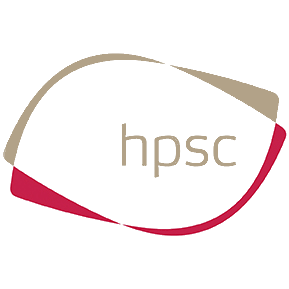Recent updates on gonorrhoea antimicrobial resistance in Ireland
Two reports on gonorrhoea antimicrobial resistance in Ireland have recently been published. Antimicrobial resistance in Neisseria gonorrhoeae (N. gonorrhoeae) is a growing global threat and the World Health Organization (WHO) has warned that gonorrhoea may become untreatable in the future due to antimicrobial resistance, if new antimicrobial drugs do not become available.
In Ireland, gonorrhoea antimicrobial resistance is monitored through participation in the European Gonococcal Antimicrobial Surveillance Programme (Euro-GASP), a sentinel surveillance programme, coordinated by the European Centre for Disease Prevention and Control (ECDC). It monitors trends in gonorrhoea antimicrobial resistance in participating countries via a three month antimicrobial susceptibility testing period each year.
In 2017, the Interim National Gonococcal Reference Laboratory (GCRL) was established within the Department of Clinical Microbiology in St. James’s Hospital (SJH). Prior to the designation of the GCRL, the Central Pathology laboratory in SJH had performed the laboratory testing for the annual Irish submission to Euro-GASP and this work is now continued within the GCRL.
The first GCRL annual report details the output of the service during 2017. Neisseria gonorrhoeae isolates were received from clinical microbiology laboratories around the country. The isolates received at the GCRL were tested for susceptibility to 6 antimicrobials (ceftriaxone, cefixime, azithromycin, ciprofloxacin, spectinomycin and tetracycline) and were tested for production of β-lactamase.
A second report and accompanying slide set details national trends in gonorrhoea antimicrobial resistance in Ireland from 2010 to 2017, based on data submitted to Euro-GASP during that time period. These trend data demonstrated high susceptibility to the extended spectrum cephalosporins (ESCs) among the reported Irish isolates. Resistance to azithromycin was at 10% among the Irish isolates. The level of resistance to azithromycin among the Irish isolates reported to Euro-GASP has been above the European average since 2014.
Azithromycin was part of the recommended dual therapy regimen for gonorrhoea infection until December 2018 when the clinical subgroup of the National Multidisciplinary Forum on Antimicrobial Resistance in N. gonorrhoeae reviewed gonorrhoea treatment guidelines and the recommended treatment for gonorrhoea was changed to monotherapy with ceftriaxone (1g); dual therapy with azithromycin is no longer recommended.
Many laboratories have opted for the more sensitive method of nucleic acid amplification test (NAAT) for gonorrhoea diagnosis, and cultured isolates necessary to perform gonorrhoea antimicrobial susceptibility testing may not be available. To improve the representativeness of gonorrhoea antimicrobial resistance data in Ireland, the national guidelines for the prevention and control of gonorrhoea and for minimising the impact of antimicrobial resistance in Neisseria gonorrhoeae provide clinical, laboratory and public health guidance on the management of gonorrhoea infection.


